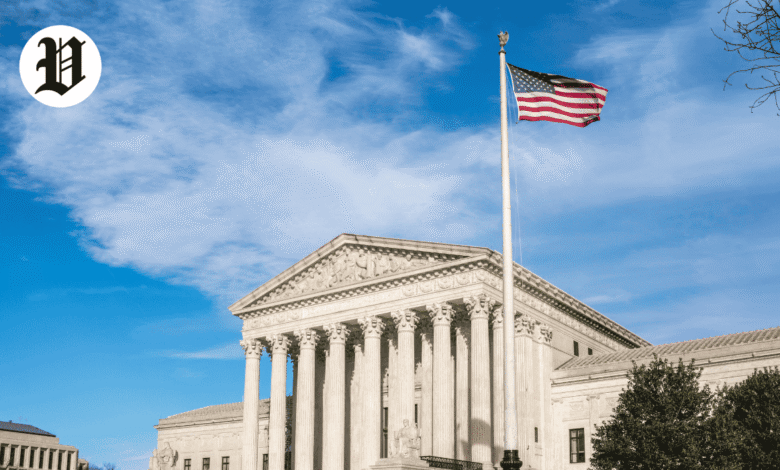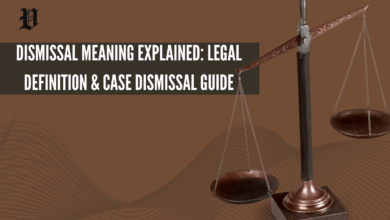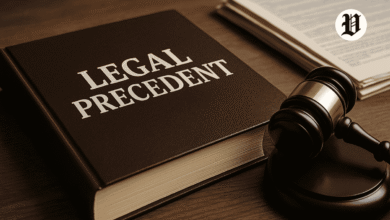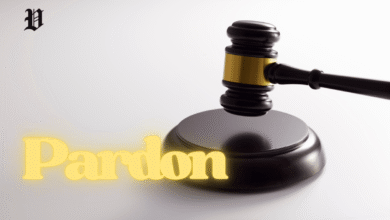The Supreme Court: The Heartbeat of America Values

The Supreme Court of the United States is more than a courtroom—it’s where the soul of our nation gets tested. It doesn’t write laws like Congress or wield executive power like the President. Instead, it holds a quieter, deeper influence, shaping the rules we live by and the rights we cherish.
From battles over equality to debates about personal freedom and new technology, the Court’s decisions echo through our history, defining who we are and who we hope to become. It’s called the “guardian of the Constitution” for a reason—it stands at the crossroads of America’s dreams and divides.
The Foundation of Its Might
Imagine the year 1789: the Constitution is brand new, and the Supreme Court is born as its protector. But it wasn’t until 1803, with Marbury v. Madison, that the Court truly found its voice. That case wasn’t just a legal spat; it was a bold declaration. The Court said it could strike down any law that clashed with the Constitution—a power called judicial review. It was like the Court stepped up and said, “We’re the ones who make sure the government plays by the rules.” That moment turned nine justices into a force that could change the country without ever leaving the bench.
People also see: Default Judgment: How to Set Aside or Vacate a Judgment Against You
Landmark Moments That Shaped Us
The Court’s rulings are like milestones on America’s journey. Each one marks a turning point, a moment when the nation held its breath. Here’s a look at some of the biggest, from history to today, showing how they’ve touched our lives:
| Case | Year | What It Was About | Why It Mattered |
|---|---|---|---|
| Marbury v. Madison | 1803 | Judicial review | Gave the Court the power to toss out laws that don’t follow the Constitution, making it a true player in government. |
| Brown v. Board of Education | 1954 | Segregation in schools | Ended “separate but equal,” opening school doors to all races and lighting a fire for civil rights. |
| Miranda v. Arizona | 1966 | Rights during arrest | Gave us “Miranda rights” (“You have the right to remain silent…”), protecting people from unfair treatment. |
| Roe v. Wade | 1973 | Abortion rights | Gave women control over their bodies until it was overturned in 2022, changing lives for decades. |
| United States v. Nixon | 1974 | Presidential accountability | Forced Nixon to hand over Watergate tapes, proving even the President answers to the law. |
| Obergefell v. Hodges | 2015 | Same-sex marriage | Made love equal, legalizing same-sex marriage across the country. |
| Dobbs v. Jackson Women’s Health | 2022 | Abortion rights | Flipped Roe, letting states decide abortion laws, sparking protests and new battles. |
| Students for Fair Admissions v. Harvard / UNC | 2023 | Affirmative action | Stopped colleges from using race in admissions, pushing them to look at income or other factors instead. |
| Biden v. Nebraska | 2023 | Student loan forgiveness | Blocked a plan to wipe out billions in student debt, saying the President overstepped his power. |
| 303 Creative LLC v. Elenis | 2023 | Free speech vs. equality | Let a business owner refuse same-sex wedding services, putting free speech first. |
| FDA v. Alliance for Hippocratic Medicine | 2024 | Abortion pill access | Kept mifepristone legal, but only because challengers didn’t have the right to sue. |
| Loper Bright Enterprises v. Raimondo | 2024 | Government agency power | Ended a rule letting agencies interpret vague laws, giving courts more control over things like environmental rules. |
| Trump v. United States | 2024 | Presidential immunity | Gave ex-presidents protection for official acts, making it harder to hold them accountable. |
| United States v. Rahimi | 2024 | Guns and domestic violence | Kept guns away from people under restraining orders, balancing safety and gun rights. |
| Garland v. Cargill | 2024 | Gun regulations | Struck down a ban on bump stocks, saying they don’t make guns illegal machine guns. |
| City of Grants Pass v. Johnson | 2024 | Homelessness and public spaces | Let cities punish homeless people for sleeping outside, raising questions about compassion. |
| United States v. Skrmetti | 2025 | Transgender youth care | Upheld a ban on gender-affirming care for minors, limiting medical choices. |
| Bouarfa v. Mayorkas | 2025 | Immigration and visas | Made it harder for courts to challenge visa denials, giving the government more say. |
| Garland v. VanDerStok | 2025 | Ghost guns | Upheld rules on untraceable firearms, a nod to public safety. |
| NIH v. American Public Health Assn | 2025 | Diversity in research | Allowed ending health research grants tied to diversity programs, stirring debate. |
These cases aren’t just words on paper—they’ve changed classrooms, bedrooms, and ballot boxes. Brown broke down walls; Dobbs built new ones. Each ruling is a snapshot of America wrestling with itself.
Fighting for Our Rights
The Supreme Court has always been where we fight for fairness and freedom:
Equality: Think of Brown tearing apart segregation or Obergefell letting love win for same-sex couples. But the Court can also pull back—its 2023 affirmative action ban made college admissions tougher for some minorities, and the 2025 transgender care ruling left young people with fewer options.
Personal Freedom: Roe gave women a choice for nearly 50 years, but Dobbs handed that power to states, leaving a patchwork of laws. The 2025 transgender care decision tightened the reins on medical autonomy, too, hitting families hard.
Free Speech: The Court keeps redefining what we can say and how. In 2023, 303 Creative let a designer say no to same-sex weddings based on her beliefs. In 2024, it backed social media companies’ right to control what’s posted, treating them like editors, not just platforms.
These rulings don’t just settle arguments—they light fires. Protests erupt, laws shift, and people’s lives change, whether it’s a couple marrying or a student denied a spot at a dream school.
Keeping Power in Check
The Court isn’t just about individual rights; it’s the referee between government branches. In 1974, United States v. Nixon made Nixon cough up his Watergate tapes, showing even presidents aren’t untouchable. In 2024, Trump v. United States gave former presidents a shield for “official” acts, making accountability trickier. And when the Court killed a decades-old rule in Loper Bright (2024), it took power from government agencies—think environmental or health regulators—and gave it to courts and Congress. That means slower rules for things like clean air or workplace safety, and it’s up to lawmakers to step up.
The Court Today: Power and Pushback
The Court’s fingerprints are all over our lives today:
Healthcare: In 2024, it kept the abortion pill legal but let states enforce tough abortion bans, leaving women’s options spotty. The 2025 transgender care ruling made it harder for kids to get certain treatments.
Voting: Since gutting part of the Voting Rights Act in 2013, the Court’s been ground zero for fights over voting maps and access. Cases in 2025 are still testing what’s fair.
Guns: The Court’s boosted gun rights in cases like Rahimi and Cargill (2024), but also backed some limits, like ghost gun rules in 2025, trying to balance freedom and safety.
New Challenges: The Court’s stepping into uncharted territory—homelessness policies, social media speech, even AI and climate rules. These are the fights that’ll shape tomorrow.
But the Court’s not without critics. With six conservative justices and three liberal ones, many say it’s picking sides in America’s culture wars. Trust in the Court is low—barely 40% of Americans approve, according to recent polls. Stories of justices accepting fancy gifts haven’t helped, fueling calls for change: term limits, stricter ethics rules, or even adding more justices. These aren’t just debates—they’re about whether the Court can still speak for all of us.
People also see: Las Vegas Real Estate Law: Your Guide to Playing It Safe in Property Deals
Frequently Asked Questions
How many justices are on the Supreme Court?
Nine: one Chief Justice and eight Associate Justices, a number locked in since 1869.
How do we get justices?
The President nominates them, and the Senate votes to confirm. It’s a big deal, often sparking fiery hearings.
How long do they stay?
For life, unless they step down, retire, or get impeached—which is super rare.
Can a ruling be undone?
Yes, either by a new Court decision or a constitutional amendment, though amendments are tough—only 27 ever passed.
Why’s the Court so powerful?
Its take on the Constitution sets rules for the whole country, touching laws, rights, and government power.
What if the justices tie?
A 4-4 or 5-4 split (if someone’s absent) lets the lower court’s ruling stand, but it doesn’t set a national rule.
Does the Court ever backtrack?
Yep. Brown erased Plessy’s “separate but equal” idea, and Dobbs flipped Roe after half a century.
Can we kick out a justice?
It’s possible—House impeaches, Senate convicts—but it’s only happened once, with Samuel Chase in 1805, and he stayed.
A Mirror of Who We Are
The Supreme Court isn’t just a legal institution—it’s a mirror reflecting America’s heart, its fights, and its hopes. Every ruling, from ending segregation to rethinking abortion, carries the weight of our shared story. When the gavel falls, it doesn’t just close a case; it shapes how we live, love, and stand up for what’s right.
As America grows—more diverse, more connected, more divided—one question hangs in the air: Should the Supreme Court hold fast to the Constitution’s original words, like a steady anchor in a storm? Or should it evolve with our changing world, meeting the needs of a modern democracy? The Court’s been both—rooted in principle in cases like Dobbs, flexible in ones like Obergefell. But with trust slipping, it faces a tough road: stay true to the past while speaking to the future, or risk losing its place as America’s moral compass.





2 Comments